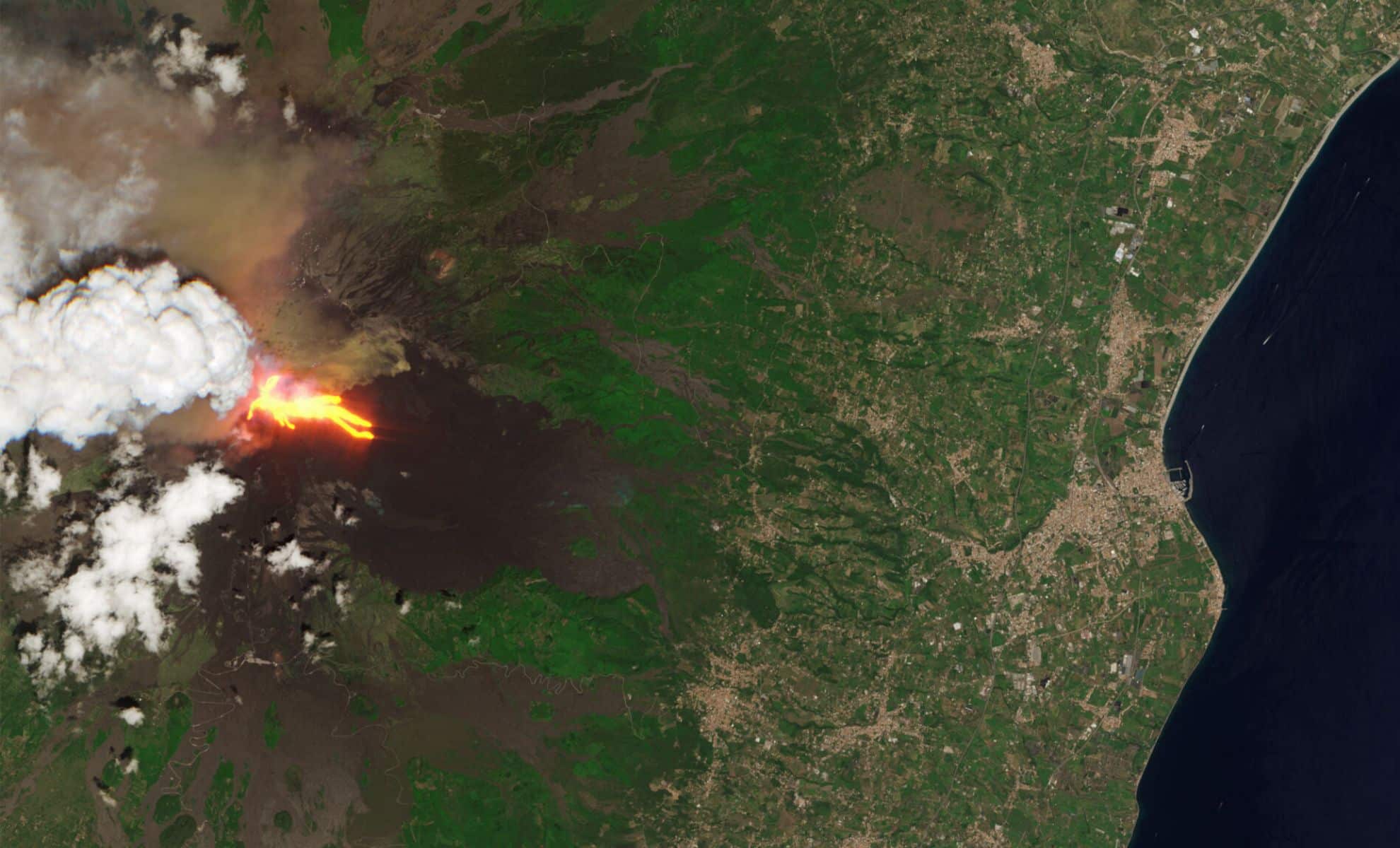On June 2, 2025, the eruption of Mount Etna—Europe’s largest active volcano—sent a massive plume of sulphur dioxide and volcanic ash into the atmosphere, captivating the world with its intensity. The European Space Agency’s (ESA) Copernicus Sentinel-5P mission captured an extraordinary image of the eruption, providing a unique view of this natural disaster from space.
A Powerful Eruption: Mount Etna’s Unstoppable Force
Mount Etna’s eruption on June 2, 2025, marked a dramatic moment in the history of one of the most active volcanoes in the world. Known for its frequent eruptions, this latest event was especially striking due to the scale of the sulphur dioxide emissions and the volume of ash, gas, and rock that were expelled into the sky. The eruption resulted in the creation of a massive plume that could be seen from space, and its effects were monitored by various satellite missions, including ESA’s Copernicus Sentinel-5P.
For the local population, the eruption brought a mixture of awe and concern, as these volcanic events, while spectacular, can have serious consequences for nearby communities. The National Institute of Geophysics and Volcanology in Italy confirmed that the magnitude of this eruption was the largest since 2014. Scientists are closely monitoring Etna’s activity as its unpredictable eruptions continue to shape the landscape.


Copernicus Sentinel-5P: Capturing the Volcano’s Imprint from Space
The Copernicus Sentinel-5P mission, a part of the European Space Agency’s Earth observation program, was instrumental in capturing the eruption’s sulphur dioxide emissions. This satellite is specifically designed to monitor the composition of the Earth’s atmosphere, and its capabilities allowed it to track the volcanic gases released by Mount Etna. Sulphur dioxide, a key indicator of volcanic activity, is not only a potent greenhouse gas but also contributes to the formation of acid rain.
The satellite’s ability to capture these emissions from space provides valuable data for researchers studying atmospheric composition and climate change. The Sentinel-5P’s images, along with data from other satellite missions, are being used to understand the broader environmental impact of such eruptions, particularly in relation to air quality and global warming.
The Role of Sentinel-2: An Optical View of the Eruption
In addition to Sentinel-5P, the Sentinel-2 mission provided an optical image of the eruption, offering a different perspective. The Sentinel-2 satellites are equipped with high-resolution imaging instruments, allowing them to capture detailed views of the Earth’s surface. This optical data is invaluable for monitoring changes in the landscape due to volcanic activity, such as the shift in terrain and the spread of volcanic materials like ash and rock.
By combining the data from both Sentinel-5P and Sentinel-2, scientists have been able to gain a more comprehensive understanding of Mount Etna’s eruption, both from an atmospheric and a surface level. These dual perspectives provide crucial insights into the eruption’s overall impact, helping to predict future volcanic hazards and improve disaster response strategies.
Mount Etna’s Activity: A Continuing Threat to Europe
Mount Etna’s eruption in 2025 is just another chapter in the volcano’s long and tumultuous history of eruptions. As one of the most active volcanoes in the world, Etna regularly experiences eruptions of varying magnitudes. Over the years, its eruptions have significantly affected both local populations and the environment. Ash clouds from Etna’s eruptions frequently disrupt air travel across Europe, and the ash also poses a health risk to nearby communities, especially for those with respiratory issues.
Furthermore, the eruption’s emissions of sulphur dioxide and other gases have a broader environmental impact. These gases contribute to air pollution and can affect global climate patterns. While the emissions from a single eruption may seem small, frequent volcanic events like this can accumulate over time, influencing both local and global ecosystems.




